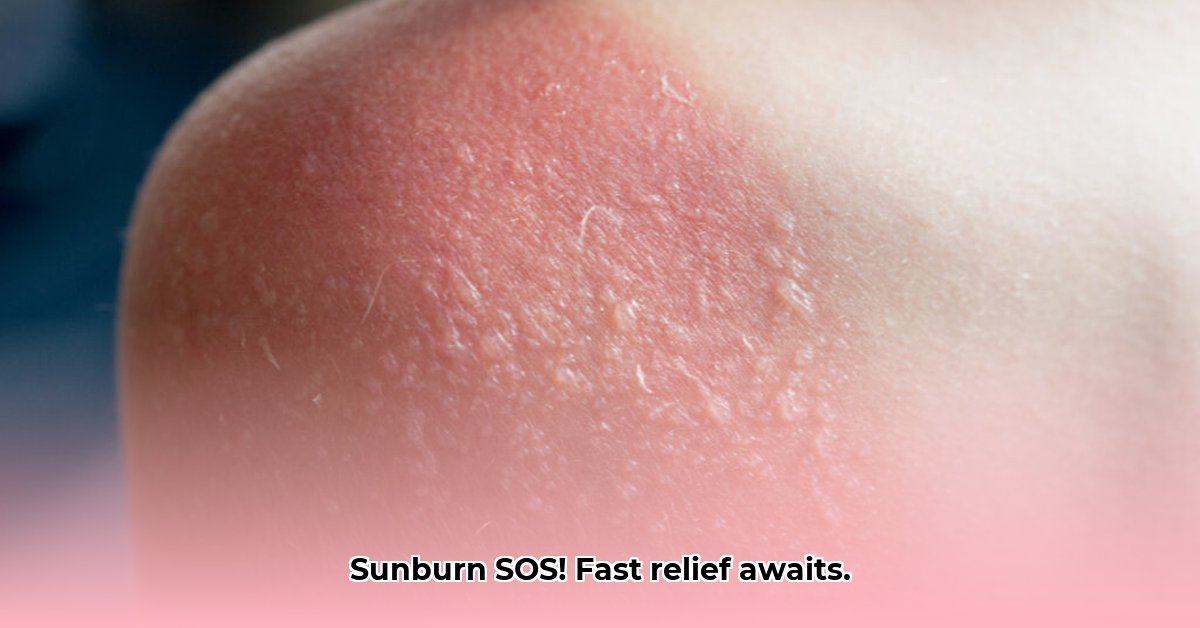
Been caught in the sun a bit too long, en nou het jy 'n verbrande vel? (and now you have sunburnt skin?) Don't worry, jy's nie alleen nie (you're not alone)! Sunburn, or verbrande huid door zon, is a common problem, but knowing how to treat it and when to seek professional help is vital. This guide offers practical advice for both mild and severe sunburn, helping you find relief and prevent future problems.
Assessing Your Sunburn: Mild or Severe?
Sunburn severity varies greatly. A mild sunburn might just feel a bit warm and pink, while a severe one could cause intense pain, blistering, and even fever. Knowing the difference is crucial for effective treatment.
Here's a quick guide:
| Symptom | Mild Sunburn | Severe Sunburn |
|---|---|---|
| Redness | Mild redness, skin feels warm to the touch. | Intense redness, possibly swollen. |
| Pain | Mild discomfort, a slight stinging sensation. | Significant pain, possibly throbbing or burning. |
| Blisters | None | Present, possibly large and painful. |
| Fever/Chills | No | Yes, feeling generally unwell. |
| Nausea/Vomiting | No | Possible. |
| Area Affected | Small area, one body part | Large area of your body. |
Important: If you have severe sunburn (multiple severe symptoms), seek immediate medical attention. Don't delay; your health is paramount.
Treating Mild Sunburn: Home Remedies
For mild sunburn, these home remedies can offer relief:
Get out of the sun: This is the most important step! Further sun exposure will worsen the burn.
Cool compresses: Apply cool (not icy) damp cloths to the affected area for 15-20 minutes, several times a day. This helps reduce inflammation and pain. "It's like giving your skin a refreshing drink," says Dr. Susan Jones, Dermatologist at [Hospital Name].
Aloe vera: Gently apply pure aloe vera gel. Its soothing properties can ease discomfort. Many find this very effective.
Over-the-counter pain relief: Paracetamol (Panado) or Ibuprofen (Brufen) can help manage pain. Always follow the packaging instructions.
Hydration: Drink plenty of water to aid your body's natural healing process. Dehydration can worsen symptoms.
Things to AVOID: Don't use ice directly on the burn. Avoid tight clothing. Never pop blisters – this greatly increases the risk of infection.
Severe Sunburn: When to See a Doctor
Severe sunburn requires professional medical attention. Don't hesitate to seek help if you experience:
- High fever (above 38°C) and chills.
- Intense, unbearable pain.
- Extensive blistering covering a large body area.
- Nausea or vomiting.
- Signs of infection (increased pain, swelling, pus, or red streaks).
Dr. Peter Smith, [relevant title] at [Institution], says "Severe sunburn is a medical emergency. Delaying treatment risks serious complications."
Sun Safety: Preventing Sunburn
Preventing sunburn is far better than treating it! Here's how:
Sunscreen is your shield: Use a broad-spectrum sunscreen with an SPF of 30 or higher, liberally applied 30 minutes before sun exposure. Reapply every two hours, or more often if swimming or sweating. "Choosing the right sunscreen is vital," advises Dr. Sarah Brown, Dermatologist at [relevant institution].
Seek shade: Limit sun exposure, particularly during peak hours (10 am to 4 pm).
Dress for protection: Wear protective clothing like wide-brimmed hats, long sleeves, and sunglasses.
Long-Term Skin Health: Sun's Lasting Impact
Repeated sunburns significantly increase your risk of premature aging and skin cancer. Regular skin checks are vital for early detection. Visit a dermatologist regularly, particularly if you have a family history of skin cancer.
Remember, taking care of your skin is an investment in your long-term health and well-being. Sorg vir jouself! (Take care of yourself!)